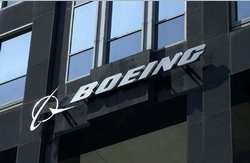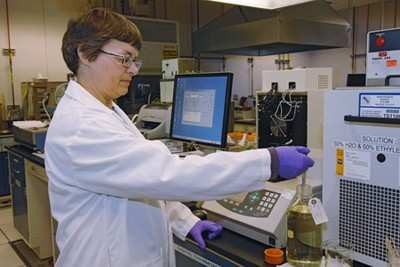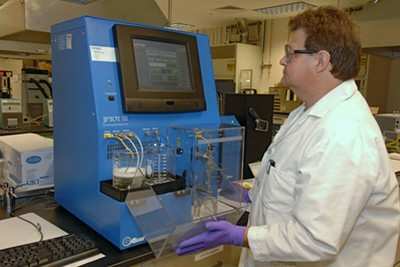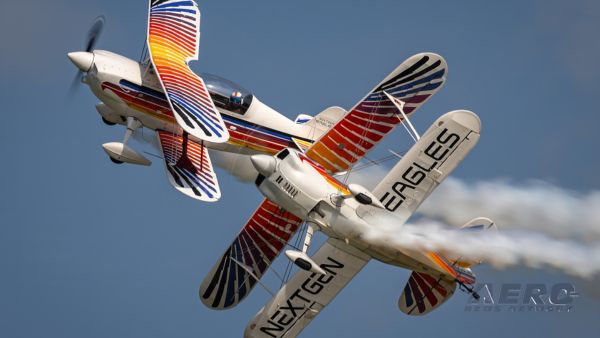Fri, Sep 28, 2007
Demonstration in 2008 targets the viability of alternative
fuels for reducing carbon emissions
 Boeing, Air New Zealand
and Rolls-Royce have agreed to a Memorandum of Understanding to
conduct a biofuel demonstration flight designed to help accelerate
the development of viable and sustainable alternative fuels for
commercial aviation uses. Boeing is exploring second-generation
biofuel feed stocks and processes that have the potential to reduce
greenhouse gases throughout their entire lifecycle.
Boeing, Air New Zealand
and Rolls-Royce have agreed to a Memorandum of Understanding to
conduct a biofuel demonstration flight designed to help accelerate
the development of viable and sustainable alternative fuels for
commercial aviation uses. Boeing is exploring second-generation
biofuel feed stocks and processes that have the potential to reduce
greenhouse gases throughout their entire lifecycle.
The demonstration flight is planned for the second half of 2008
using an Air New Zealand Boeing 747-400 equipped with Rolls-Royce
engines. Boeing is in discussions with fuel-source providers around
the globe to identify potential biofuels that are available in
suitable quantities for laboratory and jet-engine performance
testing and in compliance with stringent aviation requirements.
Additional details will be announced closer to the actual
demonstration flight date.
"Our near-term goal in this pioneering effort is to identify
sustainable alternative bio-jet fuel sources for the planes that
are flying today," said Craig Saddler, president of Boeing
Australia. A significant first step is identifying progressive fuel
sources that will provide better economic and environmental
performance for air carriers, without any change to aircraft
engines or the aviation fuel infrastructure."

The Air New Zealand bio-jet fuel demo flight will highlight the
suitability of environmentally progressive fuel solutions (bio-jet
fuels) that differ from traditional biofuel development. Bio-jet
fuels will incorporate second-generation methodologies relative to
sustainable feedstock source selection and fuel processing, which
are uniquely suited for aerospace applications. These bio-jet fuels
can potentially be blended with traditional kerosene fuel (Jet-A)
to reduce dependency on petroleum-based fuels. Additionally,
sustainable bio-jet feedstock sources avoid deforestation practices
and potential competition with global food resources, while helping
to lower aviation carbon dioxide outputs.
"This test flight is another step in our plan to lead the globe
in development of the most environmentally responsible airline,"
said Air New Zealand Chief Executive Officer Rob Fyfe. "We have
already taken large steps toward this goal by introducing
fuel-efficient Boeing 777s and we eagerly await the first of our
787-9 Dreamliners which will burn 20 percent less fuel than the
planes they replace."

Air New Zealand is a launch customer for the Boeing 787
Dreamliner, scheduled for entry into service in 2008. Air New
Zealand will receive its first 787-9 in 2010.
More News
The Airplane Impacted The Ground While In A Steep Nose-Down Pitch Attitude On June 28, 2025, about 0934 central daylight time, a Vans RV-10 airplane, N847CS, was substantially dama>[...]
From 2009 (YouTube Edition): Educational Organization Aims to Inspire by Sharing Tuskegee Story Founding leader Don Hinz summarized the Red Tail Project’s mission in simple, >[...]
Global Positioning System (GPS) GPS refers to the worldwide positioning, navigation and timing determination capability available from the U.S. satellite constellation. The service>[...]
Aero Linx: Canadian Aviation Historical Society Our Society is the world's premier organization dedicated to the preservation of Canada's diverse aviation heritage. Now well into o>[...]
“Our fundamental changes to strengthen safety and quality are producing improved results as we stabilize our operations and deliver higher quality airplanes, products and ser>[...]
 NTSB Prelim: Vans RV-10
NTSB Prelim: Vans RV-10 Classic Aero-TV: The Red Tail Project--Carrying the Torch of the Tuskegee Airmen
Classic Aero-TV: The Red Tail Project--Carrying the Torch of the Tuskegee Airmen ANN's Daily Aero-Term (08.02.25): Global Positioning System (GPS)
ANN's Daily Aero-Term (08.02.25): Global Positioning System (GPS) ANN's Daily Aero-Linx (08.02.25)
ANN's Daily Aero-Linx (08.02.25) Aero-News: Quote of the Day (08.03.25)
Aero-News: Quote of the Day (08.03.25)





